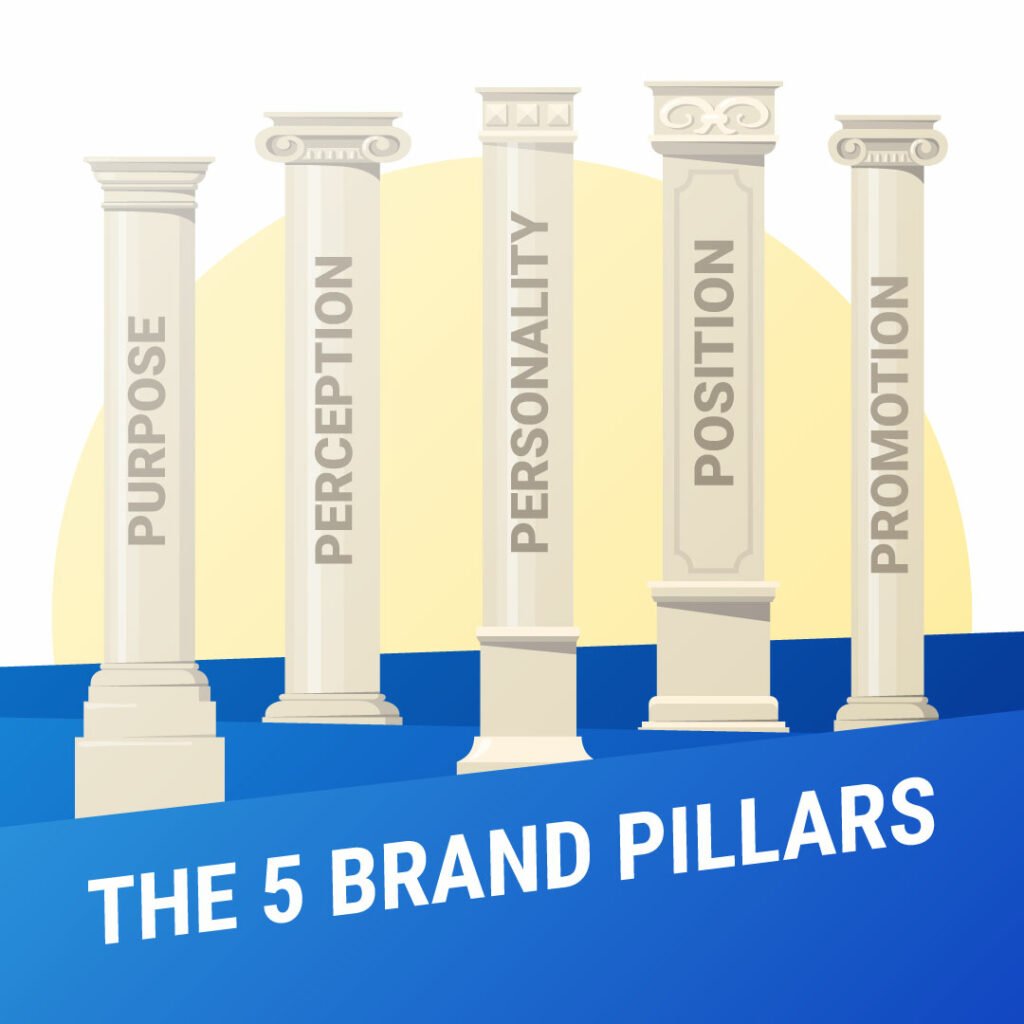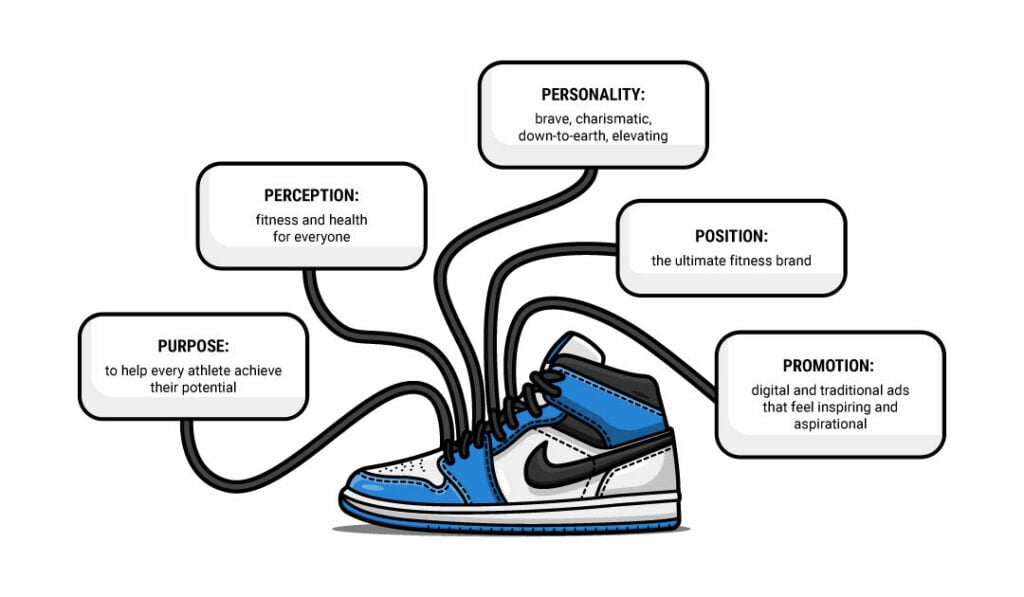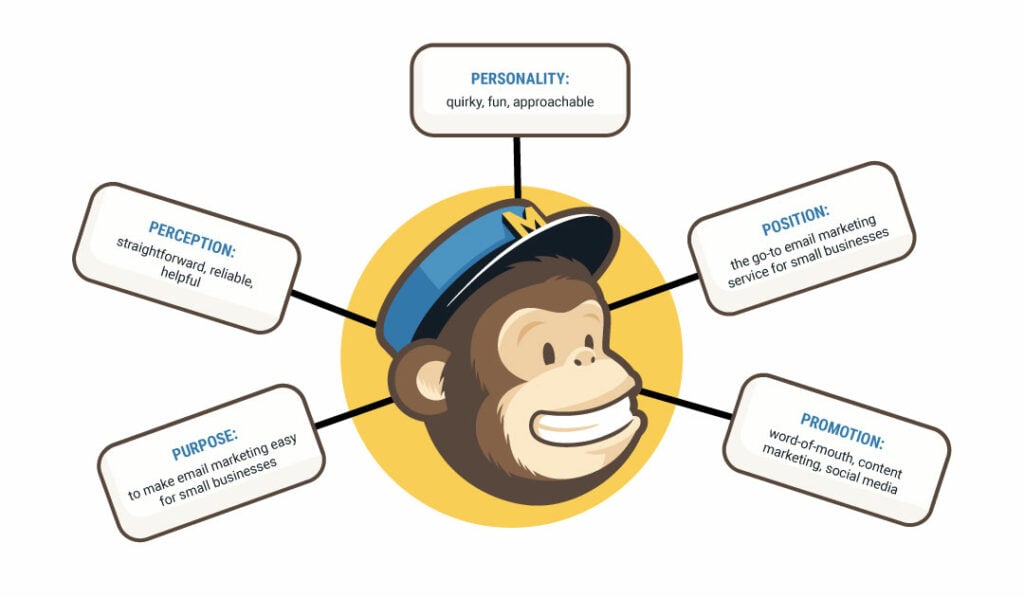Brand pillars are the unshakable foundation businesses are built on.
Buzzword-y?
Maybe.
Essential to building marketing strategies that really work — particularly in an overcrowded, overly competitive, and occasionally shaky market?
Absolutely.
If you’re a PPC marketer, brand pillars might just be the glue to connect the golden threads and help you create a holistic and successful campaign.
How, can you use brand pillars to drive cohesive PPC marketing strategies?
We dove deep into this topic to help you out.
What Are Brand Pillars — And Why Do They Matter so Much?
To create a solid and cohesive brand identity, you need to have a clear understanding of your brand pillars. Once you know what they are, you can use them to inform every aspect of your marketing strategy — including your PPC.
Brand pillars are essential for pretty much every channel, including Paid. As a PPC marketer, you should know there’s a two-way relationship between brand pillars and Pay-per-Click marketing.
On the one hand, understanding and aligning ad campaigns to brand pillars can be invaluable. It can:
- Help you create ad copy and targeting that is more relevant to your audience
- Design ad graphics that speak to your audience, entice them, and make them click
- Ensure that your campaigns are aligned with the overall company goals
- Help you narrow down your targeting (along with your negative keywords, of course)
- Make it easier to measure the impact of your PPC campaigns on brand awareness and key business metrics
On the other hand, PPC can help you breathe life into your brand pillars and make them relevant to your target audience.
- Through well-executed PPC campaigns, you can:
- Showcase your brand pillars in action
- Generate customer testimonials and social proof that reflect your brand pillars
- Use retargeting to keep your brand pillars top-of-mind
The key is to find the right balance between promoting your brand pillars and using them to drive results.

The 5 Essential Brand Pillars
There are five types of brand pillars. Together, they create a comprehensive picture of who you are as a business.
Purpose
Your “Purpose” is your “why” — why you do what you do as an organization. It’s your mission statement, the thing that drives you to get out of bed in the morning and come to work and give it your very best.
For instance, in the case of ClickGUARD, our reason for being is defeating click fraud, wasteful clicks, and bots draining Google Ads budgets. For us, it’s not just about making money — it’s about making a difference and helping our clients to achieve their goals.
The Purpose brand pillar is important because it can help you connect with your target audience on an emotional level. It’s the thing that sets you apart from the competition and makes you unique, human, and relatable.
People want to do business with companies that they can believe in, and research shows it. According to a study run in 2021, 88% of consumers say authenticity is important when making a purchase. So once you have it all clear, do make sure your purpose is front-and-center in your marketing campaigns (PPC included.)
Here are some questions to consider when building your “Purpose” brand pillar:
- What is the main reason your company exists?
- What problem do you solve for your customers?
- How do you make your customers’ lives easier?
- What are your core values?
- What is your brand story? How did your business come to be?
Perception
Your “Perception” brand pillar is how your target audience perceives you as a business.
It’s important to have a clear understanding of your brand perception because it will help you design ad campaigns that are in line with how your target audience sees you.
For example, if your target audience perceives you as a luxury brand, your ad campaigns should reflect that. They should be high-end, aspirational, and make use of well-designed visuals that convey a sense of luxury and high status. Moreover, they should be targeted at people likely to purchase luxury products, such as those in high-income brackets.
Not sure where to start on the Perception brand pillar? These questions might help:
- How does your target audience see you as a business?
- What are some of the words people use to find solutions like the one you offer?
- What are the adjectives they would use to describe you?
- How does your target audience see your competition?
- How do you want your target audience to see you?
- What’s the emotional response you aim to evoke in your target audience?
Personality
With a global economy more interconnected than ever, competition is fiercer than ever too. As a result, businesses are starting to focus on developing and conveying a strong sense of personality.
Consumers want to know who they’re doing business with, and they’re more likely to do business with companies that they feel a connection to.
That’s where the “Personality” brand pillar comes in. It’s the human face of your business, the thing that makes you relatable and likable, the “spice” to help you stand out in a sea of similar products.
Some questions to help you build out this pillar include:
- What is your company’s tone of voice?
- What are your brand colors, logo, and font(s)?
- How do you want your target audience to feel when they think of your brand?
- What is your take on humor?
- What are some of your company’s quirks?
- Do you have any brand mascots or characters?
- What is your company’s social media presence like?
Position
Your “Position” brand pillar is all about where you stand in relation to your competition.
Are you the market leader? Or are you a new player, trying to make a name for yourself?
Are you the premium, luxury option? Or are you the budget-friendly choice?
Your position in the market will dictate the kind of ad campaigns you run, as well as how you position your product in those campaigns.
For example, if you sell luxury cosmetics, your ads should position your product as the luxurious, premium choice in a market filled with budget-friendly options.
Some questions to ask yourself when building this brand pillar include:
- Who are your main competitors?
- What does each of them offer?
- How do they position themselves in the market?
- What is the gap your product/ brand is filling in this market?
- What is your competitive advantage?
- Where do you want your company to be in 5/10/15 years from now?
Promotion
The “Promotion” brand pillar is all about how you communicate your brand to the world.
It’s the way you tell your brand story, and it’s important because it helps you drive tactical decisions like what kind of ad campaigns you’ll run, what kind of social media platforms you’ll use, and what kind of content you’ll produce.
Some questions to ask yourself when building this brand pillar include:
- Where do your ideal customers hang out?
- What kind of content are they consuming?
- What channels will you use to reach them?
- How often will you communicate with them?
- What is your call to action?
- Where are they in their Buyer’s Journey?
- Do you have any brand ambassadors or evangelists? How do they present themselves?
Let’s get this straight: covering all 5 pillars of branding and answering all the brand-related questions in the world won’t mean much if you’re not purposeful about implementing them across your entire organization.
It’s not just PPC (or content or social or marketing in general) that needs to adapt to your brand pillars: it’s everyone else too. Your product, your HR, your recruiters, your company culture, your office space… all of it needs to reflect and reinforce your brand if you want to build a strong, recognizable brand.
We’ll take an in-depth look at some brand pillar examples a bit later in this guide, but for now, think of Apple and how it has excelled at not just building clear, strong pillars, but also creating an entire company culture that supports those pillars.
How to Create Your Brand Pillars
Brand pillars seem highly theoretical and intangible, but they don’t have to be. Yes, they exist on paper (or in a Google Doc/ Notion/ Confluence document.) Beyond that, however, your brand pillars should drive action — more specifically, they should inform how you run not just your ads, but your content, email, social, and community marketing too.
The good news? The process of coming up with your brand pillars is relatively straightforward:
Build Your Audience Persona
Audience (or Buyer or Ideal Buyer) Personas are where it all starts. If you don’t know who your ideal client is, you can’t create content, services, or marketing that’s relevant to them. Everything — from your website to your social media activity — should be in tight relation with your Buyer Persona.
Creating an audience persona might seem daunting, but it doesn’t have to be. You can start by creating a Google Sheet or document and answering the following questions:
- Who is your ideal client?
- What are their demographics?
- What’s their job title?
- What are their interests and hobbies?
- What are their pain points?
- What are their goals?
You can also use this exercise to create more than one audience persona. For example, if you offer different services or product lines, you might target different types of people. In this case, you can create multiple buyer personas, one for each of the products/services you offer.
Once you have your audience persona (or personas) in place, you will have made the first step to creating brand pillars that speak to your audience.
For instance, let’s say your ideal client is consisted of men and women in their 30s and 40s, working in large enterprises, in the IT department, and concerned by the cybersecurity of the organization’s remote workforce. Their main points revolve around the ever-evolving cybercriminal space and the lack of awareness employees have when it comes to the dangers of data breaches. Their interests are Marvel Comic books, IT, cybersecurity, and tennis.
In this case, your brand pillars should speak to your ideal audience. For instance, you can create a brand that is a little bit quirky but knows when to take things seriously. You can be the brand that makes cybersecurity actually interesting and fun – and even more so for people who show a degree of interest in this.
Talk to Your Customers and Employees
Talking to your target audience and your employees is the second step in coming up with brand pillars that will actually resonate.
When conducting customer research, your goal should be to understand how people see and use your product. This can be done in various ways:
- Customer surveys
- Customer interviews
- Usability testing
- Focus groups
When talking to your employees, on the other hand, you want to understand how they see the company and what it represents to them. Do this by:
- Conducting employee surveys
- Organizing focus groups with employees
- Doing one-on-one interviews with employees
Do keep in mind that you want your employees to be 100% honest about this — so anonymity and creating a safe space for any kind of opinion might be a factor to consider here.
Both your target audience and your employees will give you priceless insights into what your brand represents to them. These insights will help you understand what you should be conveying with your brand pillars, beyond the raw, quantitative data you can get from your user/ buyer base, Google Analytics, or other tools.
Analyze Your Competitors
You can learn a lot from your competitors, and this research will come in handy when creating your brand pillars. Here’s what you should be looking for:
- What do they talk about?
- How do they position themselves?
- How is their visual identity?
- What’s their overall tone and voice?
Your goal is not to copy your competitors, but be better or fill in a gap they aren’t. The idea is not to feel like you’re trapped in a never-ending arms race, trying to keep up with what everyone else is doing. Instead, you want to focus on creating brand pillars that differentiate you from the competition and set you in a category of your own.
Define Your Company Values
Brand pillars vs company values? Wait, are these actually different?
Well, yes, kind of. They definitely interrelate, but they are not the same thing. Here’s how:
Your company values are the guiding principles of your business. They influence everything you do, from the way you treat your employees to the way you design your products.
Your brand pillars, on the other hand, are what you want your customers and clients to think of when they think of your brand. They are, in a way, the embodiment of your company values for the external eye.
Defining your company values is important when you build brand pillars because hey will serve as the foundation for everything you do.
Some companies make the mistake of using their brand pillars as a way to sell themselves, rather than a way to build trust and credibility with their audience. This is where your company values come in: they should always be at the forefront of your strategy, informing your decisions and the way you portray yourselves to the outside world, whether that happens through PPC, content, guerilla marketing, or on any other channel.
Brand Pillars Examples to Inspire You
Alright, enough with the theoretical lesson. Here are some brand pillar examples to give you a more practical idea of what we’re talking about:
Nike
- Purpose: to help every athlete achieve their potential
- Perception: fitness and health for everyone
- Personality: brave, charismatic, down-to-earth, elevating
- Position: the ultimate fitness brand
- Promotion: digital and traditional ads that feel inspiring and aspirational

Patagonia
- Purpose: to save our planet
- Perception: eco-friendly, ethical, outdoorsy
- Personality: adventurous, rugged, responsible
- Position: the go-to brand for sustainable apparel
- Promotion: word-of-mouth, social media, content marketing
Apple
- Purpose: to design and develop the best personal computers in the world
- Perception: cutting-edge technology, sleek design, user-friendly
- Personality: innovative, trendsetting, cool
- Position: the premium computer brand
- Promotion: celebrity endorsements, bigger-than-life launch events, social media
Mailchimp
- Purpose: to make email marketing easy for small businesses
- Perception: straightforward, reliable, helpful
- Personality: quirky, fun, approachable
- Position: the go-to email marketing service for small businesses
- Promotion: word-of-mouth, content marketing, social media

Four Seasons
- Purpose: to provide an exceptional experience for every guest, every time
- Perception: luxurious, relaxing, 5-star service
- Personality: professional, courteous, polished
- Position: the premier hotel chain for business and leisure travelers
- Promotion: print ads, TV commercials
Amazon
- Purpose: to bring online shopping closer to everyone
- Perception: reliable, convenient, trustworthy
- Personality: customer-focused, innovative
- Position: the go-to online retailer for everything
- Promotion: digital ads, Amazon Prime, word-of-mouth
eToro
- Purpose: to make online trading accessible to everyone
- Perception: easy-to-use, user-friendly
- Personality: approachable, down-to-earth, funny
- Position: the go-to trading platform for beginner investors
- Promotion: social media, influencer marketing, paid ads
Coca-Cola
- Purpose: to refresh the world and make a difference
- Perception: happy, optimistic, inclusive
- Personality: friendly, fun, global
- Position: the world’s most popular soft drink
- Promotion: TV commercials, print ads, social media, guerilla marketing
Brand Pillars: Conclusion
Brand pillars might sound like the kind of thing you can do when “you have the time” (spoiler alert, you never have enough time on your hands as a PPC marketer.) And yet, the truth is that they should lie at the foundation of your ads.
Without a proper strategy regarding your brand, you’re shooting arrows in the dark, chasing trends, trying to outrun an ever-growing competition, and generally making things more difficult for yourself than they have to be.
By having a clear understanding of your brand pillars, you can make decisions based on both data and where you want to take your brand. More even, you can build out, execute, and optimize Google Ads, Facebook Ads, and other ad campaigns that are in line with your brand and business strategy.
In short: your brand pillars can make a huge difference in the success of your paid advertising campaigns (as well as your overall marketing efforts.)
Brand Pillars: FAQs
What are brand pillars?
Brand pillars are the foundation of your brand, and they consist of your brand’s Purpose, Perception, Personality, Position, and Promotion. They are the essential characteristics that make up your brand identity and guide all of your marketing efforts.
What are brand messaging pillars?
Brand messaging pillars are a subset of brand pillars that refers specifically to the Language and Tone you use in your marketing communications. They are consisted out of your brand’s Voice, Tone, and Messaging.
How to create brand pillars?
The easiest way to create brand pillars is by asking yourself the right questions u002du002d and then fleshing out your five brand pillars based on your answers: Purpose, Perception, Personality, and Promotion.



